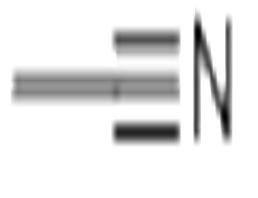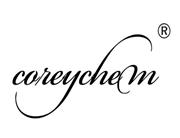1/2
Acetonitrile
$ 1.00
/1KG
- Min. Order1G
- Purity98%
- Cas No75-05-8
- Supply Ability100KG
- Update time2019-07-06

career henan chemical co
VIP8Y
 China
China
Since:2014-12-17
Address:Zhengzhou High tech Zone, Henan Province, China
Enterprise Verified
Business Bank account
Basic Contact Infomation
Business Address
Trade Company



Chemical Properties
| Product Name | Acetonitrile |
| CAS No | 75-05-8 |
| EC-No | |
| Min. Order | 1G |
| Purity | 98% |
| Supply Ability | 100KG |
| Release date | 2019/07/06 |
AD68
| Acetonitrile Basic information |
| The simplest organic nitrile Toxic and hazardous effects Purification methods Laboratory use Chemical properties Uses Production method Category Toxicity grading Acute toxicity Data of irritation Explosive characteristics Flammability characteristics Storage characteristics Professional standards |
| Product Name: | Acetonitrile |
| Synonyms: | MOBILE PHASE ACETONITRILE;R5, ACETONITRILE;S4B, ACETONITRILE;SOLVENT B, ACETONITRILE;Acetonitril;acetonitril(german,dutch);CH3CN;Cyanomethan |
| CAS: | 75-05-8 |
| MF: | C2H3N |
| MW: | 41.05 |
| EINECS: | 200-835-2 |
| Product Categories: | INORGANIC & ORGANIC CHEMICALS;Organics;Nitriles;Analytical Chemistry;Solvents for HPLC & Spectrophotometry;Solvents for Spectrophotometry;HPLC Solvents;Chemistry;Blends - CHROMASOLV for HPLCSemi-Bulk Solvents;Blends- CHROMASOLV for HPLCSolvents;CHROMASOLV(R) HPLC Grade SolventsSolvents;VerSA-Flow? Products;Acetonitrile and Acetonitrile SolutionsSolvent Bottles;Amber Glass Bottles;CHROMASOLV Solvents (HPLC, LC-MS);Pre-Blended Mobile Phase Solvents;Solvents;Blends- CHROMASOLV LC-MSCHROMASOLV Solvents (HPLC, LC-MS);CHROMASOLV(R) LC-MSSpectroscopy;LC-MS BlendsSolvents;LC-MS Plus and Gradient;Protein Sequencing;Protein Structural Analysis;Reagents for Protein Sequencing;LC-MS Blends;Mass Spectrometry (MS)&LC-MS;Spectroscopy;Pre-Blended Mobile Phase Solvents;Products;Returnable Containers;Solvent Packaging Options;Acetonitrile and Acetonitrile Solutions;Amber Glass Bottles;Analytical Reagents;Analytical/Chromatography;Blends - CHROMASOLV for HPLC;Blends- CHROMASOLV for HPLC;Chromatography Reagents &;HPLC &;HPLC Grade Solvents (CHROMASOLV);HPLC/UHPLC Solvents (CHROMASOLV);Semi-Bulk Solvents;Solvent Bottles;Solvent by Application;Solvent by Type;UHPLC Solvents (CHROMASOLV);VerSA-Flow Products;3-MCPD;Adulterants;and NOGE;and Sterols;Applications;Artificial Sweeteners;Beverage Analysis;Bisphenol A (BPA);Bisphenol A in Bottled Water;Carbohydrates (sugars and saccharides) and Dietary Fiber;CHROMASOLV Gradient Grade;Edible Oils;Fats (fatty acids and triglycerides);Food &;Food Dyes;HPLC Gradient Grade Solvents (CHR;Acrylamide;Allergens;Amino Acids;BADGE;Beverages;BFDGE;CHROMASOLV Gradient;Essential Oils;ACS and Reagent Grade Solvents;Alternative Energy;Electrolytes;Materials Science;Organic Solvents;ReagentPlus;ReagentPlus Solvent Grade Products;Pesticide Residue Analysis (PRA) Solvents;Solvents for GC applications;Solvents for Organic Residue Analysis;Trace Analysis Reagents &;GC Solvents;Nitrile series;Composite Drums;Drums Product Line;NOWPak Products;HPLC Gradient Grade Solvents (CHROMASOLV);PVC Coated Bottles;ACS Grade;ACS Grade Solvents;Carbon Steel Flex-Spout Cans;Core Bioreagents;Life Science Reagents for Protein Electrophoresis;Research Essentials;Anhydrous;Anhydrous Solvents;Sure/Seal Bottles;Biotech;Biotech Solvents |
| Mol File: | 75-05-8.mol |
 |
|
| Acetonitrile Chemical Properties |
| Melting point | −48 °C(lit.) |
| Boiling point | 81-82 °C(lit.) |
| density | 0.982 g/mL at 20 °C |
| vapor density | 1.41 (vs air) |
| vapor pressure | 72.8 mm Hg ( 20 °C) |
| refractive index | n20/D 1.344(lit.) |
| Fp | 48 °F |
| storage temp. | 2-8°C |
| solubility | organic solvents: soluble(lit.) |
| pka | 25(at 25℃) |
| form | liquid |
| color | <10(APHA) |
| Relative polarity | 0.46 |
| explosive limit | 3.0-17%(V) |
| Water Solubility | miscible |
| Merck | 14,70 |
| BRN | 741857 |
| Stability: | Stability Unstable. Incompatible with alkali metals, acids, bases, reducing agents and oxidizing agents. Highly flammable. |
| CAS DataBase Reference | 75-05-8(CAS DataBase Reference) |
| NIST Chemistry Reference | Acetonitrile(75-05-8) |
| EPA Substance Registry System | Acetonitrile(75-05-8) |
| Safety Information |
| Hazard Codes | F,Xi,Xn,T |
| Risk Statements | 11-36-20/21/22-10-36/37/38-23/24/25-41-24-20/22 |
| Safety Statements | 16-36/37-45-36/37/39-27-26-36 |
| RIDADR | UN 1993 3/PG 3 |
| WGK Germany | 2 |
| RTECS | AL7700000 |
| F | 9 |
| Hazard Note | Highly Flammable/Harmful/Irritant |
| TSCA | Yes |
| HazardClass | 3 |
| PackingGroup | II |
| HS Code | 29269095 |
| Hazardous Substances Data | 75-05-8(Hazardous Substances Data) |
| Toxicity | LD50 orally in rats: 3800 mg/kg (Smyth) |
| Acetonitrile Usage And Synthesis |
| The simplest organic nitrile | Acetonitrile is the simplest organic nitrile, usually also called as nitrile methyl cyanide and methane. It is a colorless transparent liquid at room temperature. It is highly volatile, with special smell like ether, and flammable with flame burning brightly. It is mutually soluble in water, methanol, carbon tetrachloride, methyl acetate, ethyl acetate, ethylene dichloride, and many other non-saturated hydrocarbon solvents. It is toxic and can be metabolized into hydrogen cyanide and thiocyanate. Acetonitrile is a good solvent with excellent performance and is an important organic intermediate. It is also widely used as a polar aprotic solvent. The biggest application of acetonitrile is as a solvent which can be used as the solvents for the synthesis of vitamin A, cortisone, carbon amine drugs and their intermediates solvent. It also used as an active medium solvent in the manufacture of vitamin B1 and amino acids. It can substitute chlorinated solvents as a vinyl coating, an extracting agent of fatty acid, a alcohol denaturant, the extracting agent of butadiene, and the solvent of acrylonitrile synthetic fibers. It also has a lot of applications in fabric dyeing, light industry, spice manufacturing, and photographic materials manufacturing. |
| Toxic and hazardous effects | Acetonitrile class is produced by heating a mixture of glacial acetic acid and acetamide. It is an important industrial solvent primarily used for the medium of organic synthesis (e.g. acetophenone, 1-naphthyl acetic acid, thiamine, etc.), extracting agent of fatty acids, and alcohol denaturant. During the production process, exposure to liquid or vapor may cause poisoning. [Clinical manifestations] Acute and occupational acetonitrile poisoning is not uncommon. There are many reports at both home and abroad. Vapor of acetonitrile has mild irritation so it can cause some degree of upper respiratory tract irritation in the case of high concentrations. Compared with hydrogen cyanide, acetonitrile although causes symptoms like nausea, vomiting, abdominal pain, diarrhea, chest pain, fatigue, and weakness, even respiratory depression in severe case, sometimes also causes hypotension, coma, and convulsions, but its onset process is relatively slow with the incubation period over 4H; nor does it cause illness as severe as hydrogen cyanide. It also rarely causes sudden death; For poisoned patients, their heart rates, pulse rates as well as the respiration rates decrease. They often got pale faces and also suffer kidney impairment like protein-urine. The toxicity of acetonitrile is not only related to the released CN-in vivo but also related to itself and its thiocyanate metabolites. There are currently no clinic products for treating chronic acetonitrile poisoning. [Diagnosis and differential diagnosis] Diagnosis is mainly based on reliable history of exposure to large doses of acetonitrile and clinical characteristics, the appearance of similar poisoning effects for mutual contractees plays a obvious indication role; timely determination of plasma CN-, SCN-, and acetonitrile content is also indicative, and is the biomarker of contacting with acetonitrile. However, it cannot tell the existence and extent of poisoning. Acute acetonitrile poisoning should be paid attention to distinguish with toxic poisoning caused by other industrial toxic substance such as organic solvents, asphyxiating gas. It should also be distinguished from cerebrovascular accident, diabetic coma. [Treatment] Refer to the content on treatment of hydrogen cyanide but cut the dose of methemoglobin forming agent by half. In the presence of sodium thiosulfate, we can apply in early phase of the slowly acted methemoglobin generation agents such as amino benzene acetone (PAPP). Taken one orally each time, and can repeat for every 4H. For the next day, maintaining with sodium thiosulfate is enough. The dosage of sodium thiosulfate can also be cut by half two days later and totally stopped after 3 to 5 days. Because of the toxic effect of the acetonitrile, when apply it as the antidote of cyanide antidote, people should be particularly participate in actively supportive treatment according to the symptomatic and supportive treatment, pay attention to the function maintenance of the heart, lung, brain, and apply rehydration for diuresis to accelerate the toxic discharge and reduce kidney impairment. |
| Purification methods | Industrially, acetonitrile is a byproduct of the reaction between propylene and ammonia which produces acrylonitrile, so often acetonitrile often contains water, acrylonitrile, ether, ammonia and some other impurities, even hydrolyzed acetic acid and ammonia. The purification method is as below: 1. Add phosphorus pentoxide (10-20g/L) into acetonitrile; heat and reflux until reaching colorless which can remove most water; avoid adding an excess of phosphorus pentoxide which will generate an orange polymer. Add a small amount of potassium carbonate into the distilled acetonitrile and continue distillation which can further remove excess phosphorus pentoxide; finally fractionate by fractional distillation column. 2. Use 36 g of mashed potassium permanganate and 28 g of mashed potassium carbonate to reflux 1L common anhydrous acetonitrile for 5 hours before evaporate it. Then add 10g of phosphorus pentoxide to the evaporated solvent; reflux for another 5 hours, fine slip, keeping the temperature constant, take the fraction of 81 °C. 3. Adding 4A molecular sieves or silica gel and shaking can also remove most of the water in acetonitrile. Next, stir it together with the calcium hydroxide until no hydrogen being further released; fractionate to get acetonitrile which also contain only a small amount of water without the existence of any acetate. 4. Acetonitrile can also be mixed together with methylene chloride, benzene and trichlorethylene for azeotropic distillation and drying. The above information is edited by the Chemicalbook of Dai Xiongfeng. |
| Laboratory use | Acetonitrile is also used as a polar aprotic solvent. In inorganic chemistry, acetonitrile is widely used as a ligand which is abbreviated MeCN. For example, acetonitrile complex PdCl2 (MeCN)2 can be produced by thermal polymerization of palladium chloride in the suspension of acetonitrile. The high dielectric constant of acetonitrile makes it a popular cyclic voltammetry of solvents. Acetonitrile can also be used as a two-carbon raw material in organic synthesis. It can produce malononitrile via reaction with cyanogen chloride. Acetonitrile can also be used as the mobile phase molecules which are commonly used in the column chromatography, more modernized high performance liquid chromatography (HPLC). In the field of nuclear medicine, acetonitrile is used for the synthesis of radiopharmaceutical like fluoro-deoxy-glucose positron (FDG). During the synthesis of FDG, the evaporation of acetonitrile can take away the water in the reaction system. The exact content of acetonitrile in the reaction system plays a significant role in ensuring the synthesis efficiency and quality of medicines; at the same time, acetonitrile is also sued as the solvent and the matrix for the reaction system. In addition, in the routine quality inspection of FDG, acetonitrile: water mixture (for example, 85% v/v) is also applied as the mobile phase of TLC. |
| Chemical properties | Colorless; transparent liquid; has a unique fragrance similar to ether; miscible with water, methanol, methyl acetate, acetone, ether, chloroform, carbon tetrachloride and vinyl chloride miscible. |
| Uses | Acetonitrile is the raw material for preparing orthoacetate. It is also used as the intermediate of producing DV-acid methyl ester and 2-chloro-3,3,3-trifluoro-1-propenyl-2,2-dimethyl cyclopropanecarboxylate. It can also be used as the raw materials of making pyrimidine derivatives which is the intermediate of sulfonylurea herbicides. Moreover, it can be used for making vitamin B1 in the field of pharmaceutical industry and as the extraction agent of C4 fraction in the synthetic rubber industry. Used as nitrile rubber monomer; Used for pharmaceutical industry and extraction of carbon IV. As standard reference in chromatographic analysis; also as solvent and stationary phase for gas chromatography. The major application of acetonitrile is as a solvent such as solvents for butadiene extraction, solvent for synthetic fibers and solvents for some special paints. In the oil industry, acetonitrile is used as the solvent for removing tar, phenol and other substances from petroleum hydrocarbons. It is also used as the solvent for extracting fatty acids from vegetable and animal oil in the fatty acid industry, and used as the reaction medium of the recrystallization of steroidal drugs in medicine industry. The binary azeotropic mixtures of acetonitrile and water are often used when a polar solvent of high dielectric constant is demanded: containing 84% acetonitrile, boiling point: 76 °C. Acetonitrile is used as the intermediate of pharmaceutical (vitamin B1) and spices, as the raw materials for making the synergist of triazine nitrogenous fertilizer, and also as a denaturant for ethyl alcohol. Moreover, it can also be used for synthesizing ethylamine, acetic acid, etc., and have many applications in textile dyeing and light industry. It is used as the solvent of most inorganic compounds. It is also used as the solvent for spectrophotometric measurement, as a non-aqueous solvent, and as the diluents for determination of the carboxyl group. Furthermore, it is also applied in recrystallization of steroids and extraction of fatty acid, and also used as the solvents of High pressure liquid chromatography (HPLC). |
| Production method | There are many ways of making acetonitrile. Those major ways for industrial production include acetate amination method, acetylene amination method and propylene ammoxidation byproduct method. 1. Acetate amination method use acetate and ammonia as raw materials with reaction being performed at a temperature of 360-420 °C in the presence of aluminum oxide as the catalyst. This is a one-step synthesis method. The reaction mixture is further gone through water absorption and fine distillation to get the final product. Material consumption quantity: acetate (98%) 1763kg /t, ammonia (99.5%) 691kg/t. 2. Acetylene amination method uses ammonia and acetylene as the raw materials and the reaction is carried out at a temperature of 500-600 °C with aluminum oxide being the catalyst. It is again a one-step synthesis approach. Material consumption quantity: acetylene 10231 m3, ammonia (99.4%) 1007 kg/t. 3. Propylene amination and oxidation byproduct method use propylene, ammonia, and air as the raw materials. It produces acrylonitrile with the catalyst while producing acetonitrile as byproducts. Per ton of acrylonitrile can make 25-100kg byproduct of acetonitrile. 4. Made from the dehydration reaction between acetamide and phosphorus pentoxide. 5. Obtained from reaction between dimethyl sulfate and sodium cyanide. Acetonitrile is usually the byproduct of ammoxidation reaction used for producing acrylonitrile. We can also apply acetate amination method with aluminum oxide as the catalyst. Acetonitrile is obtained by one-step reaction at 360 °C. Reaction equation: CH3COOH + NH3 [Al2O3] → CH3CN + 2H2O. |
| Category | Flammable liquid |
| Toxicity grading | highly toxic |
| Acute toxicity | oral: rat LD50: 2730 mg/kg; Oral-Mouse LD50: 269 mg/kg. |
| Data of irritation | skin: rabbit 500 mg, Mild; Eyes-rabbit 79 mg/24 hours, moderate. |
| Explosive characteristics | Can be explosive when mixed with air. |
| Flammability characteristics | Flammable in case of fire, high temperature and oxidant; thermally decomposed to release highly toxic fumes of cyanide and nitrogen oxides. |
| Storage characteristics | Treasury: ventilation, low-temperature, dry; store it separately from oxidants and acids. |
| Chemical Properties | Colorless liquid |
| Uses | Solvent |
| Uses | In organic synthesis as starting material for acetophenone, a-naphthaleneacetic acid, thiamine, acetamidine. To remove tars, phenols, and coloring matter from petroleum hydrocarbons which are not soluble in acetonitrile. To extract fatty acids from fish liver oils and other animal and vegetable oils. Can be used to recrystallize steroids. As an indifferent medium in physicochemical investigations. Wherever a polar solvent having a rather high dielectric constant is required. As medium for promoting reactions involving ionization. As a solvent in non-aqueous titrations. As a non-aqueous solvent for inorganic salts. |
| Professional standards | TWA 70 mg/m3; STEL 105 mg/m3. |
| General Description | A colorless limpid liquid with an aromatic odor. Flash point 42°F. Density 0.783 c / cm3. Toxic by skin absorption. Less dense than water. Vapors are denser than air. |
| Air & Water Reactions | Highly flammable. Water soluble. |
| Reactivity Profile | Acetonitrile decomposes when heated to produce deadly toxic hydrogen cyanide gas and oxides of nitrogen. Strongly reactive [Hawley]. May react vigorously with strong oxidizing reagents, sulfuric acid, chlorosulfonic acid, sulfur trioxide, perchlorates, nitrating reagents, and nitric acid. [Sax, 9th ed., 1996, p. 20]. Potentially explosive in contact with nitrogen-fluorine compounds (e.g., tetrafluorourea) [Fraser, G. W. et al., Chem. Comm., 1966, p. 532]. |
| Health Hazard | Exposure to 160 ppm for 4 hours causes flushing of the face and a feeling of constriction in the chest; 500 ppm for brief periods is irritating to the nose and throat. Severe exposures cause irritability, skin eruptions, confusion, delirium, convulsions, paralysis, and death due to central nervous system depression. |
Company Profile Introduction
Established in 2014,Career Henan Chemical Co. is a manufacturerspecializing in the sale of fine chemicals. Mainly deals in the sales of: Pharmaceutical intermediates OLED intermediates: Pharmaceutical intermediates; OLED intermediates;


